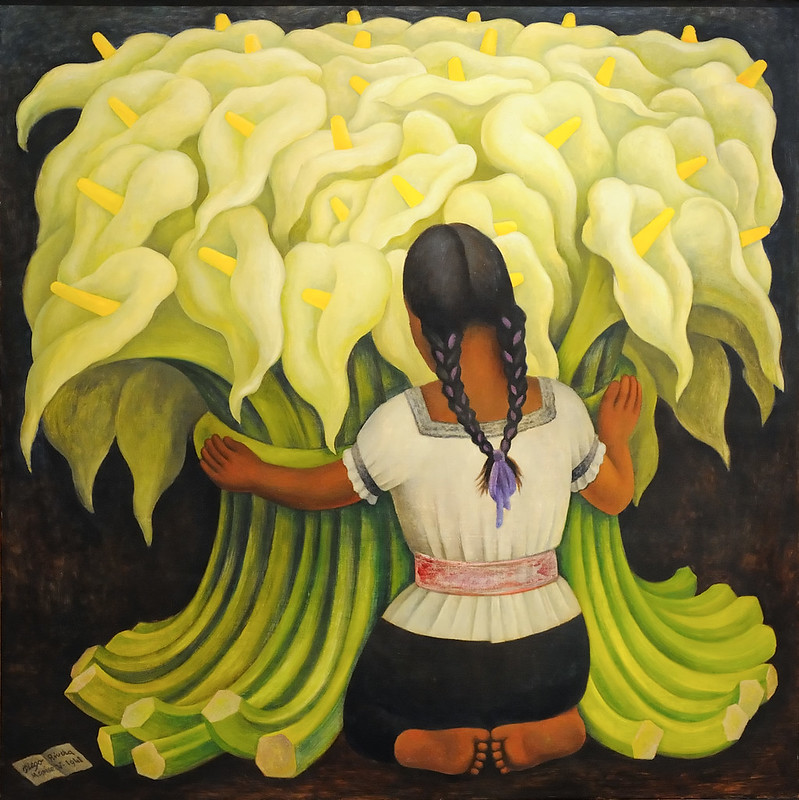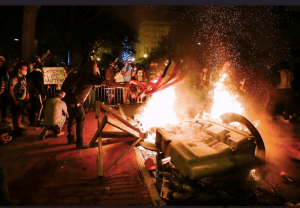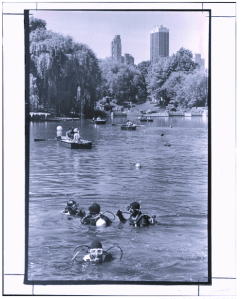
A gift from a friend
I looked everywhere, but although I saw many objects that I love and value, nothing was a gift, except the very house in which I sit. Is an inheritance a gift? I asked myself. And if so, whose gift? The first or the most recent person to bequeath it?
Luckily, I spotted my little pot-bellied ceramic mug. Beige and speckled intimately with teeny brown freckles, a large crack the shape of a woman’s neck, and a nick here and there — which makes me drink from the other side. I LOVE this cup. It is a gift from a very close very old very cantankerous very controversial friend. We are speaking now, but have often stopped our energetic conversations about sex, politics, drugs, politics, money, and politics.
She bought me a tea set in the marketplace in the old town square in Prague. Stamped “hand made,” it was fashioned around the time the new peace was being forged between Washington and Moscow to allow the Czech Republic some breathing room, a little taste of freedom and democracy, a thawing of the Cold War.
Like the peace, the cup is cracked, beaten up, scarred. But it still delivers a delicious cup of the bitterest, hottest, black coffee in the world. Just like I like it.
What’s going on in this pic? [vts] 2 June 2020 (high school)
Objective: Use visual thinking strategies to describe the meaning of a visual text. Look closely at this image, stripped of its caption, and join the conversation about what you and other students see.
1. look closely at the photo; think about these three questions, and answer them completely:
— What is going on in this picture?
— What do you see that makes you say that?
— What more can you find?
2. After you have written your responses, copy them from the Google Doc attached to assignment #A-06022020-7. DO NOT copy the MLA-8 class header. Then, join the conversation by pasting your response in the comments box (WITHOUT the header).
3. Be sure to add your pkcsd email, and to give yourself an identity that includes your name or your initials.
Look closely at this image, stripped of its caption, and join the P[E]ACE conversation.
What’s going on in this pic? [vts] 2 June 2020 (middle school)
Objective: Use visual thinking strategies to describe the meaning of a visual text. Look closely at this image, stripped of its caption, and join the conversation about what you and other students see.
1. look closely at the photo; think about these three questions, and answer them completely:
— What is going on in this picture?
— What do you see that makes you say that?
— What more can you find?
2. After you have written your responses, copy them from the Google Doc attached to assignment #A-06022020-7. DO NOT copy the MLA-8 class header. Then, join the conversation by pasting your response in the comments box (WITHOUT the header).
3. Be sure to add your pkcsd email, and to give yourself an identity that includes your name or your initials.
Look closely at this image, stripped of its caption, and join the P[E]ACE conversation.
How I make a really good seafood gumbo:
Sprinkle a teaspoon or so of filé over the gumbo. Enjoy!
Gravity Glue: Michael Grab Meditations
Pay close attention to this image, breathing gently as you reflect on its progression. Replay and describe how you reacted to the image at 28 seconds. At Join the P[E]ACE conversation about what you and other students see.
Analyze this video:
1. Describe what is going on in this video.
— What thoughts come to mind as you observe?
— Describe what you observed.
— What mood does the image inspire in you?
2. Turn and talk to a neighbor about your perceptions.
3 . At the end of this Blog post, Click LEAVE A COMMENT or REPLY:
Reply by writing your reflection here, including any comments from other students that may have added to or changed your opinion.
What’s going on in this pic? [vts] 16 March 2020
Objective: Use visual thinking strategies to describe the meaning of a visual text. Look closely at this image, stripped of its caption, and join the conversation about what you and other students see. [Click on image to see larger version.]
In your journal, on a numbered page, or on looseleaf, date the page 16 March 2020. Using your best descriptive writing, answer these questions:
1. What is going on in this picture?
2. Why do you say that?
3. What else do you see?
4. Count your words, fill in your table of contents.5. Access Google docs or other text editor
6. Transcribe your journal comments to Google doc or editor.
7. Review your comments and check for mistakes
8. Return to English is My Thinglish
9. Click LEAVE A COMMENT below the image
10. Paste your comment into the comments section
11. Submit your comments.
12. Review 3 other PACE students’ comments about this image.
13. Review 3 comments on the New York Times Web site.
14. If you can, paste your comment on the New York Times Web site.
15. Review at least five student comments and respond to three students’ comments.
Look closely at this image, stripped of its caption, and join the P[E]ACE conversation about what you and other students see. [Click on image to see larger version.]
Critical Lens: “The measure . . .” :: 18 Feb. 2020
Look closely at this image, and read its message carefully. Join the P[E]ACE conversation about what you and other students see. [Click on image to see larger version.]
In your journal, analyze this message using the critical lens process:
1. Who is the author, and what is the quotation?
2. Paraphrase (put into your own words) the quotation.
3. Interpret the quotation (what does the author mean?).
4. Agree or disagree with the quotation.
5. Explain in a few sentences why you agree or disagree.
6. Count your words, fill in your table of contents.
7. Turn and talk to a neighbor about your perceptions.
8. At the end of this Blog post, Click LEAVE A COMMENT or REPLY: Reply by writing your critical lens journal entry here, including any comments from other students that may have added to your opinion.
“The Migration Series” :: Jacob Lawrence
“The Migration Series” :: Jacob Lawrence
“The Migration Series” :: Jacob Lawrence
View this video to learn about Jacob Lawrence, historical and cultural events that influenced his thinking, and what inspired his art. In the comments section, post your answers to four questions about Lawrence, “The Migration Series,” and African-American migration north.
- Who was migrating in The Migration Series. Where were they going?
- Why were they leaving the South?
- What type of jobs had African Americans traditionally done in the South?
- What type of jobs were many migrants hoping to find in the North?






